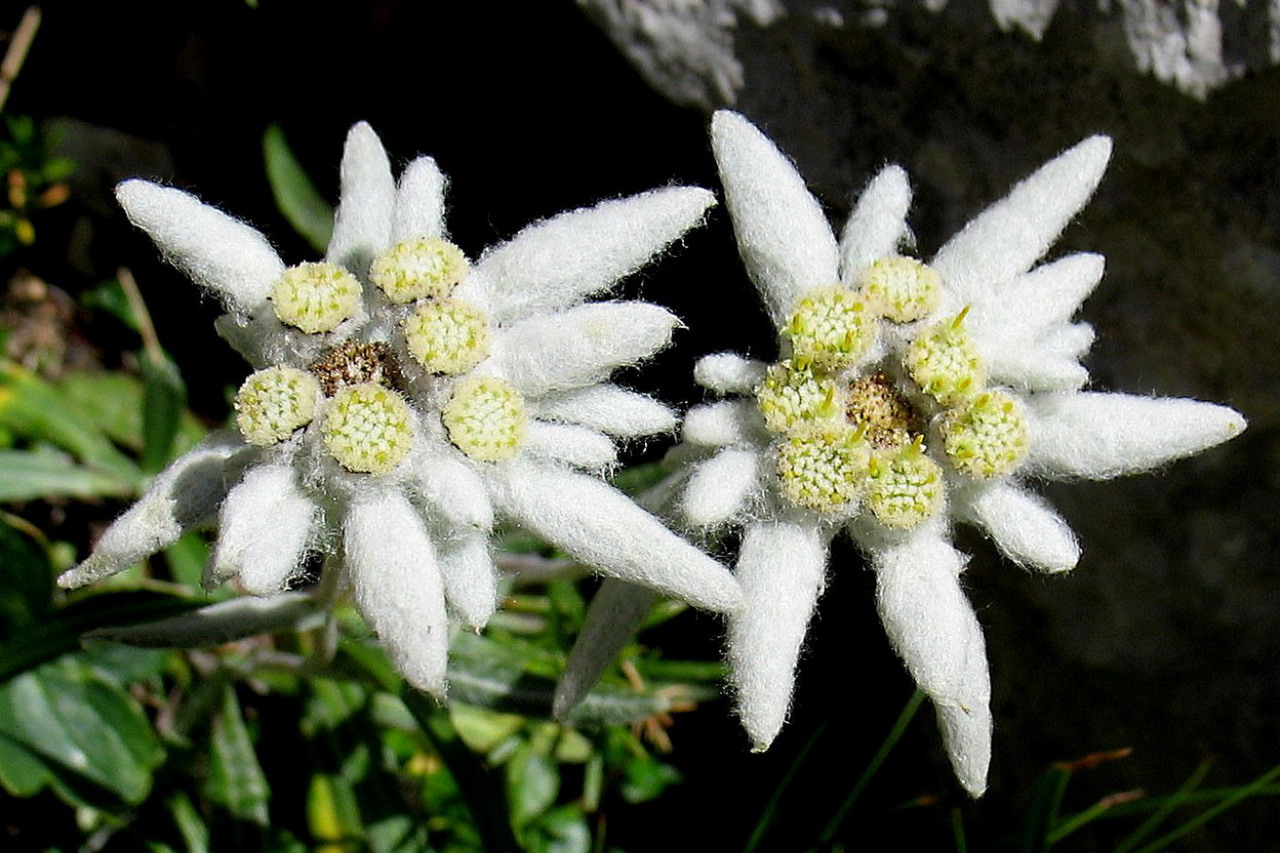The national flower of Switzerland is Edelweiss. Its Scientific name is Leontopodium Alpinum. Edelweiss is a mountainous flower which blooms annually between July and September. Flowers are one of the reasons for Switzerland’s beauty. Edelweiss is a star-shaped flower and belongs to the family of Sunflower and Daisy. It is white in color and has wooly white hair like structure on its leaf.

Table of Contents
Interesting facts about Edelweiss Flower
- Edelweiss can grow to a size from 3 cm to 20 cm in wild and up to 16 inches in cultivation.
- It prefers growing on fatal heights of 1,500 to 3,000 meters and daring steeps.
- It belongs to Asteraceae family with Leontopodium as a genus.
- Its name is derived from a German word ” Edelweiß“, Edel means noble and Weiß means white.
- It is non-toxic and is used as a medicine remedy in the cure of abdominal and respiratory diseases.
- It is also said that it contains anti-aging substances.
Why is Edelweiss the national flower of Switzerland?
The Edelweiss is a unique flower and is the symbol of love. People of Switzerland who want to show their real love, plant this flower in an adventurous location. Locals think that this flower is also the symbol of purity. The highest military rank of Switzerland is the badge in the form of Edelweiss flower. It is cultivated widely and local folks have an emotional attachment to this flower. It is not only the National Flower of Switzerland but also the National flower of Austria.
Growing Edelweiss:
Edelweiss can be planted in flowerbeds, in borders, and even in containers similar to pots. Direct sunlight, garden soil, watering, weather condition, manure, and mulching are the aspects which influence the growth of Edelweiss. Underneath are some methods to grow Edelweiss:
Store the seed in the freezer for three months. This will mimic the weather conditions that Edelweiss would receive in the wild. Take a container and sow the seeds in the soil and slightly water it. Keep the soil moist until germination. After that, move the container to a place where it can absorb direct sunlight. Now move the seedlings from the container to a flowerbed. Flowerbed should have an excellent drainage system and must receive bright sunlight. You can also purchase a mature plant, and transplant it in your garden’s flowerbed.
Taking care of your flowers:
The first thing to consider, is checking the soil. Edelweiss needs a pH from slightly alkaline to medium acidic for growing. They need a quality drainage too. For better growth, mix peat moss, sand, and compost in equal parts and add it to the soil. Edelweiss rarely require water after it is grown because it can bear harsh weather conditions. After the plant is established, soggy soils can cause its death. Cover Edelweiss plant with a thick layer of mulch between late fall and spring. Then remove the layer in spring to allow child plants to come through. Edelweiss usually self-seed in areas where summer is relatively cooler.
